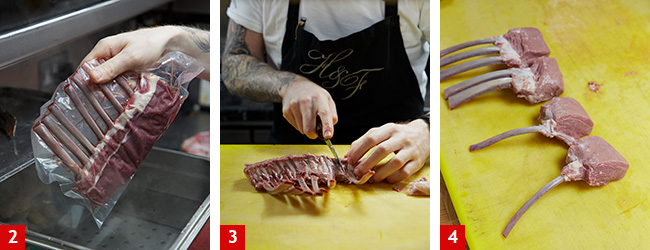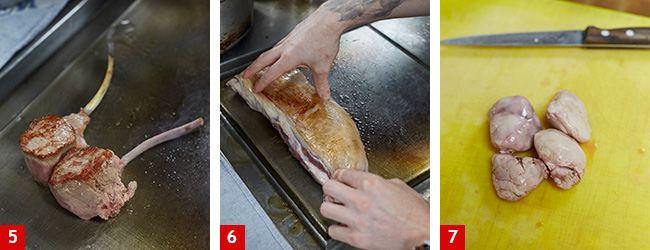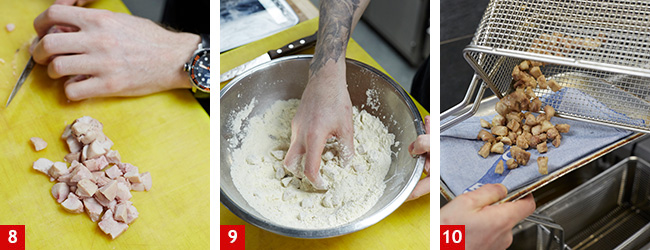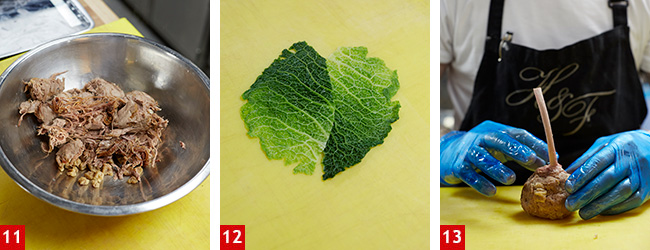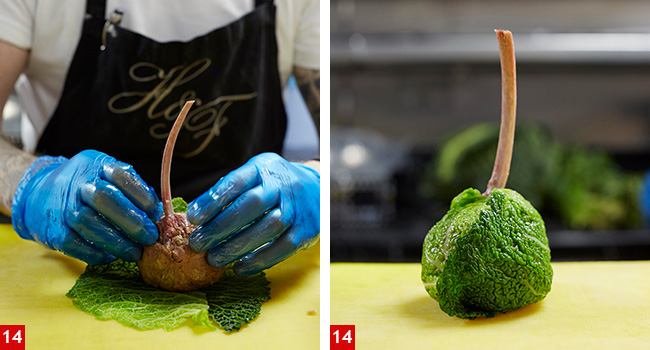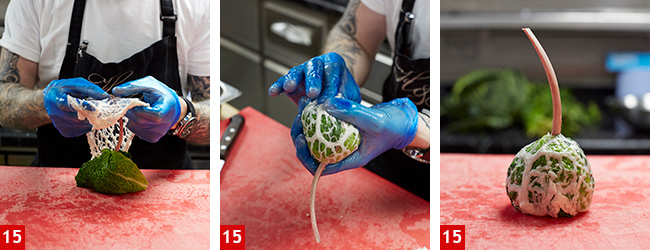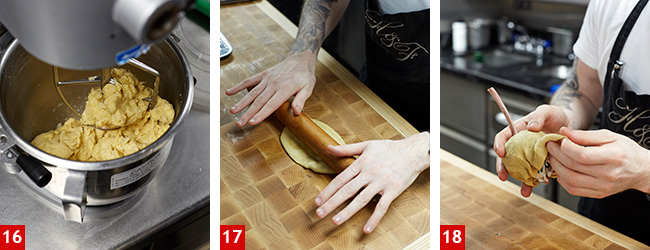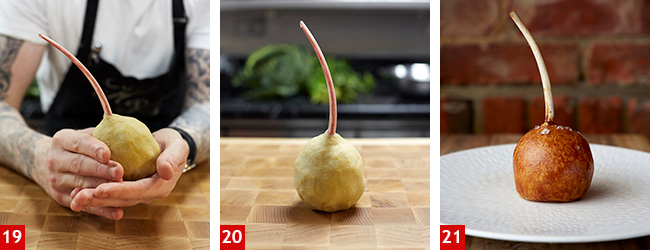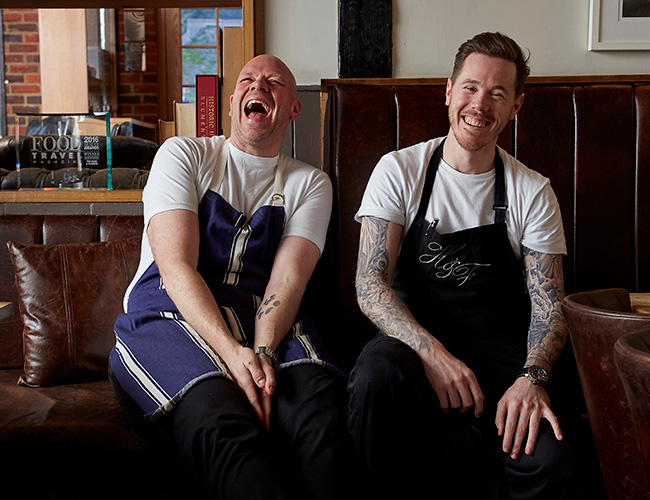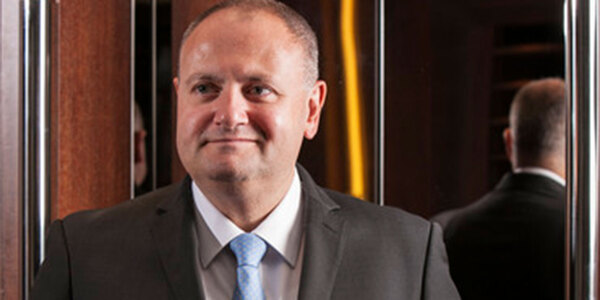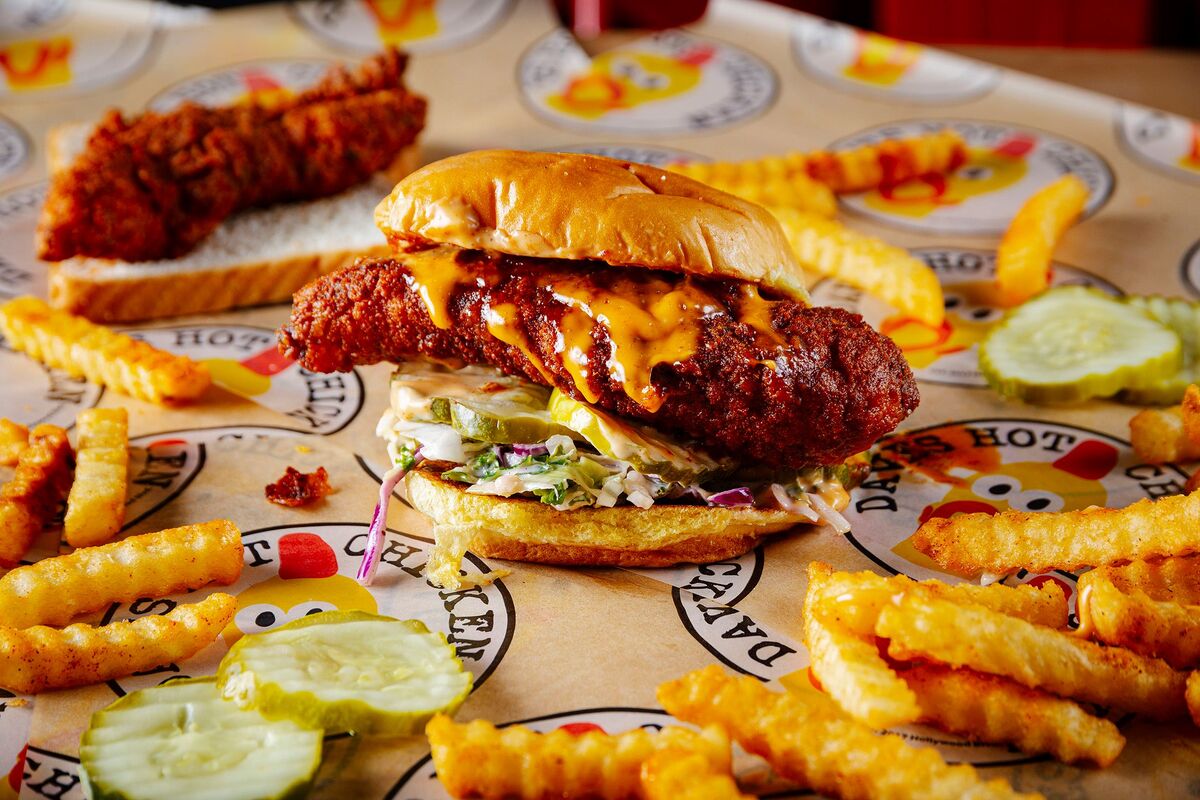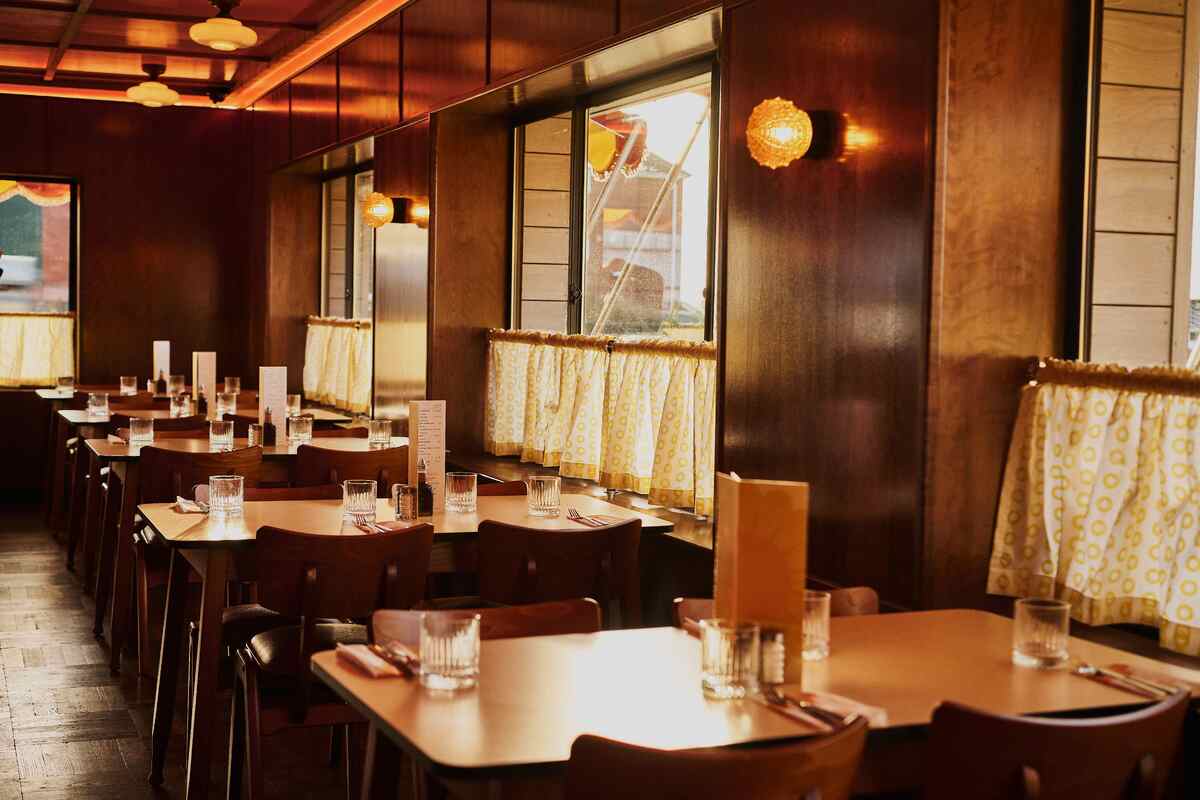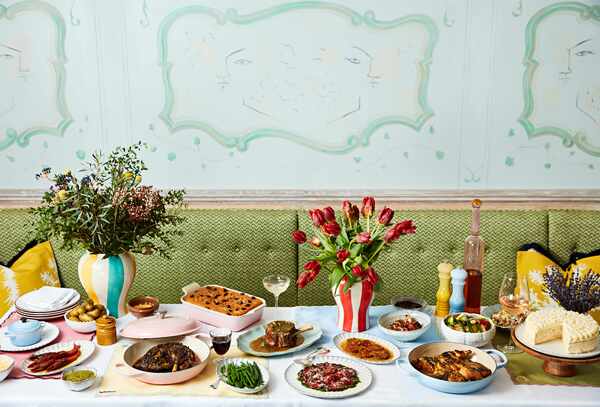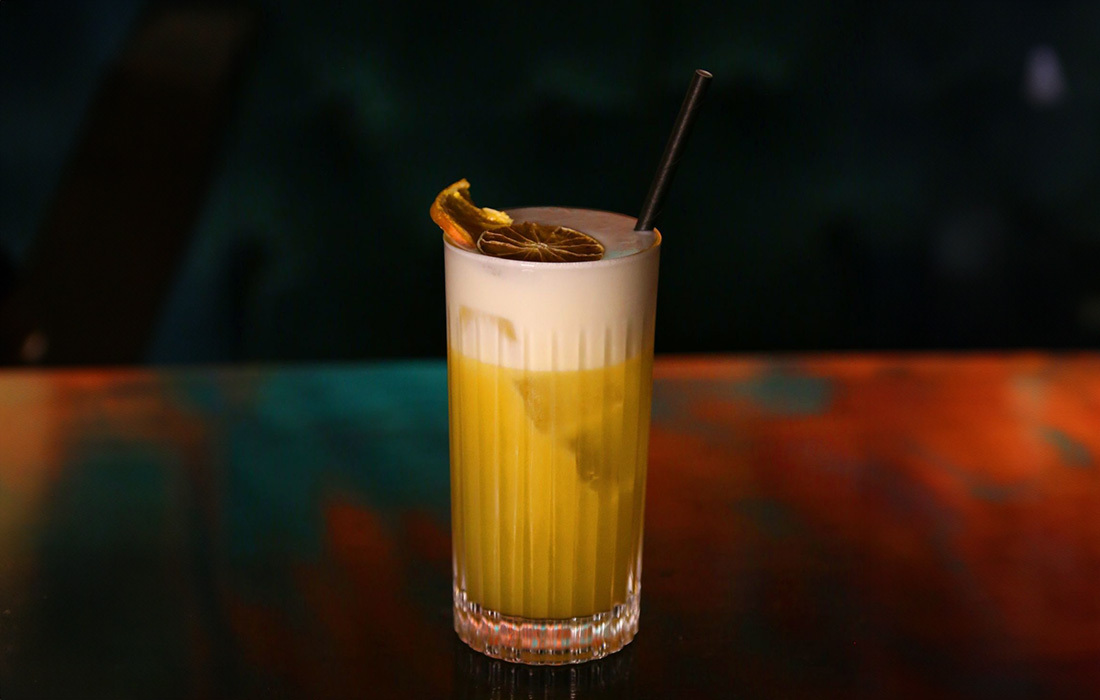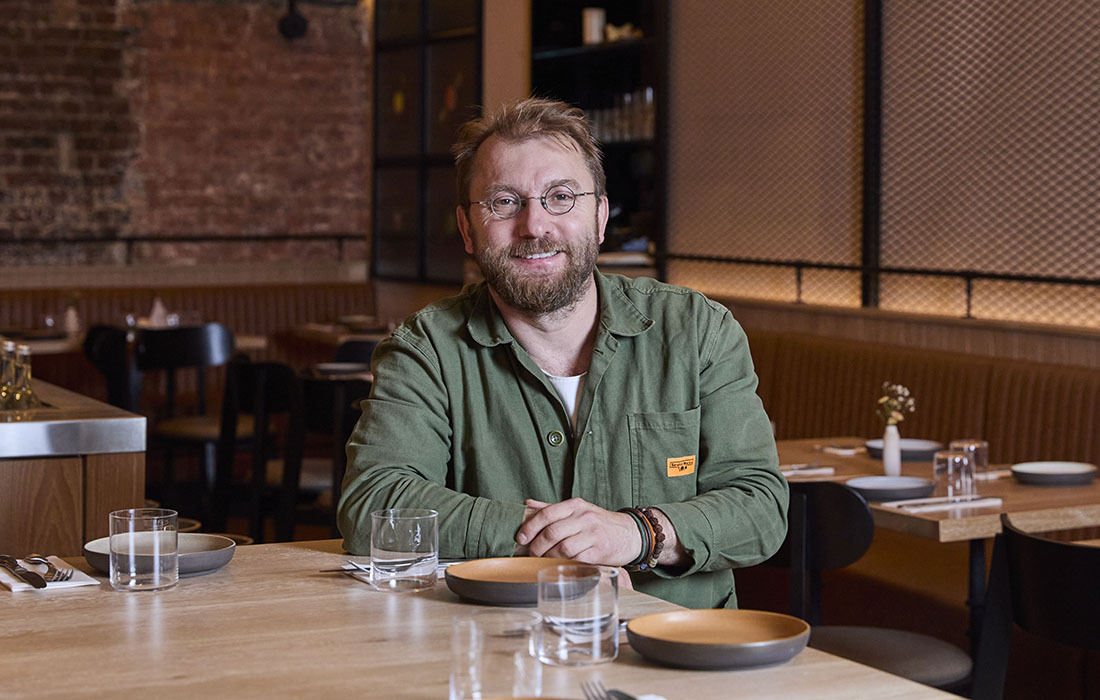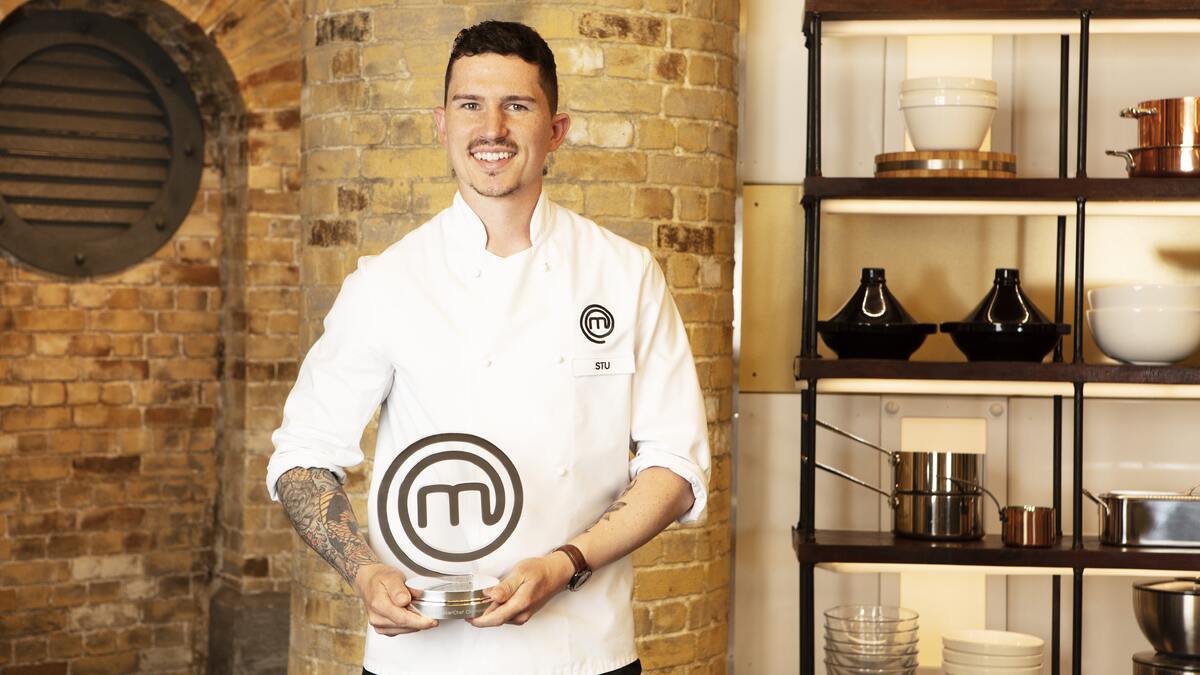Masterclass: The Hand & Flowers' lamb bun
Aaron Mulliss, head chef at Tom Kerridge's Hand & Flowers, prepares a many-layered lamb ‘bun' with sweetbreads and salsa verde. Michael Raffael reports
Chefs and customers alike scratch their head about the difference between one and two Michelin stars. There's more to it than just buying higher-status ingredients; nor is it about tightening consistency, as important as that is. Least of all is it about picking up trends and food fashions. Progress happens slowly because precocious talents, such as a young Marco Pierre White, only emerge once in a generation or three.
Tom Kerridge's Hand & Flowers, the 2007 Newcomer Catey winner, earned its first star a decade ago, soon after opening. The second came in 2012. The kitchen didn't suddenly go up a notch, but the cooking and the dishes on the menu never stopped evolving.
The lamb bun illustrates this perfectly. At the outset it was a parsley and mint-flavoured chicken mousse packed around a lamb cutlet wrapped in brioche. Over time, a bread dough replaced the brioche, then breast of lamb mixed with sweetbreads took over from the mousse base. Finally, Kerridge's development chef, Chris Mackett, created a kind of hot water crust pastry with polenta that added a perfect, crisp shell. An echo of the herb origin can now be seen in the salsa verde that accompanies it.
Batch size
The kitchen prepares a dozen buns at a time, but the quantities can be scaled up or down without any change in the recipe balance. One seven-bone rack of lamb yields four portions.
Costing
Hand & Flowers head chef Aaron Mullis works to an overall 72% gross profit. The lamb bun costs about £6.50, depending on the lamb price, and it sells for £36.
Planning
The lamb bun is a standalone item on the plate, so its components need careful management:
- The lamb racks are prepped, poached in a water bath, portioned and seared.
- The breasts of lamb are cooked sous vide for eight hours to obtain tender, lean meat.
- Bone marrow is used as a binder with lamb jus and is soaked overnight before blending.
- The lambs' sweetbreads are poached, diced and deep-fried.
- The breast meat and sweetbreads are formed around the lamb cutlet.
- The meat is rolled in Savoy cabbage and caul fat before chilling.
- The pastry is made and wrapped around the individual buns while it is still fresh.
- The buns are glazed and baked.
For the lamb rack
Makes 4 portions; scale up for larger batches
- 1 x seven-bone French-trimmed rack (where the flank has been trimmed to expose the bones)
Pare away any fat over the eye muscle (1). Seal the rack in a vac-pack at 100% pressure and poach for 30 minutes at 54°C (2).
Take the lamb out of the pack and give it a final trim (3)(4).
Brush a hot griddle with sunflower or rapeseed oil and sear the four chops on all sides to colour them lightly (5).
Note: The lamb fat should be rendered down and reserved for the pastry.
For the breast of lamb
Makes 4 portions
The quantity here is approximate because the lean meat yield can vary. The aim is to obtain 250g of cooked meat. The instructions are for one breast, but you might need two.
Brush a griddle with oil â" as for the chops â" and brown the joint (6). Double-wrap the lamb breast in a vac-pack bag and seal. Cook sous vide for eight hours at 90°C.
Separate all the lean meat from the bone fat and sinew. It should have a fibrous, âpulledâ texture.
For the sweetbreads
Makes 4 portions
- 150g lambsâ sweetbreads
- 100g onion or shallot, roughly diced
- 2-3 garlic cloves
- 1 celery stick, chopped
- Bouquet garni of thyme, rosemary, small bay leaf and peppercorns
- 500ml water
- Flour for dusting
- Oil for deep-frying
Wash the sweetbreads and peel away any sinew (7). Make a court bouillon with the onion, garlic, celery, herbs and water and simmer for 10-15 minutes.
Add the sweetbreads and poach for 30 minutes. Drain and cool. Dice the sweetbreads into 1cm cubes (8) and dust with flour (9). Deep-fry for one to two minutes at 180°C, and then drain and pat dry (10).
Forming the lamb bun (stage 1)
Makes 4 portions
Notes
- Before taking on its pastry overcoat, each portion of meat should weigh 150g.
- The bone marrow and lamb jus (see panel) mixed with the meat is more suited to a larger batch size. Prepare the amount as given below, but add about 100ml extra of jus for four portions.
Blend 200g bone marrow and 200ml lamb jus in a Vitaprep. Combine 250g flaked breast meat with the sweetbreads (11). Add enough of the jus to moisten it a little. Check seasoning.
Blanch and refresh about a dozen large Savoy cabbage leaves (they are for wrapping the parcels of lamb). Press the leaves with a rolling pin so that they are all of an even thickness (12).
Take a quarter of the sweetbread and lamb breast mixture (about 70g) and form it into a ball around the eye muscle of a lamb chop (13). Wrap this in cabbage leaves (14) and then in a layer of caul fat (15). Repeat for each remaining chop and chill thoroughly. This is important because the meat has to be stiff enough to wrap the pastry around it.
Lamb fat and polenta pastry
Makes 12 portions
- 500g plain flour
- 100g polenta
- 10g salt
- 15g bicarbonate of soda
- 150g melted lamb fat
- 190ml boiling water
Combine the dry ingredients in a mixing bowl. Add the fat and mix to a coarse meal with a K-beater (16). Add the boiling water and continue mixing on a slow and then a medium speed to form a plastic dough.
Scale into 70g units â" one per bun. Handle the pastry while it is still warm.
Forming the lamb bun (stage 2)
For four portions
For each bun, roll out 70g of pastry dough (17). Pierce the pastry through the middle using the rib bone of each chop (18). Wrap it around the meat, ensuring there are no creases (19).
Brush with an egg wash (20) (the Hand & Flowers combines 9 yolks, 30ml milk and 15g dextrose).
Bake for 12 minutes at 185°C in a forced convection oven. Rest for 5 minutes before serving (21). Accompany with a spoonful of the salsa verde (see below) and a pot of lamb jus.
Lamb jus
Brown 10kg of lamb bones and lean trimmings in the oven. Pour over 15 litres of concentrated brown chicken stock. Boil, skim and simmer gently for six to eight hours. Strain and reduce to a demi-glaze, about 3 litres.
Salsa verde
- 150g flat leaf parsley
- 50g mint
- 75g capers
- 25g anchovies
- 3 shallots
- 5 cloves garlic
- Grated zest of 3 untreated lemons
- Pinch cayenne pepper
- Salt to taste
- 300ml olive oil
Blend all the ingredients in a Vita-prep. Transfer to a Pacojet canister and freeze â" this way, the salsa retains its freshness. Allow about 15g of the sauce for each order.
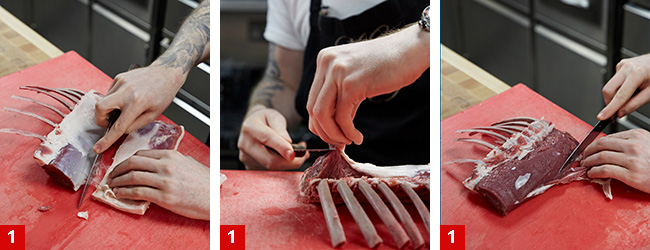
When he opened the Hand & Flowers 12 years ago, leasing a Greene King pub on the outskirts of Marlow, Tom Kerridge worked with two chefs in the kitchen â" his wages bill has now swollen to around 100 people.
He has a second pub, the Coach, also in Marlow, and is about to open a restaurant in central London at the Jumeirah Carlton Tower in Knightsbridge. That expansion has changed his role from the âbig manâ chef always at the stove to a significantly slimmed down 43-year-old restaurant manager: âYou are a business manager who is aware of the bigger picture rather than the mise en place before lunch. Itâs a much bigger project,â he says.
Kerridge never envisaged his career developing as it has. âI never looked beyond providing a neighbourhood pub-restaurant for the super community of Marlow,â he says.
His ability allied to his natural charm on the small screen has torn up that scenario and London seems the natural next step. âWhen you look at where I was â" an 18 year old commis from a single-parent family in Gloucester â" and now I have the chance of opening a wonderful Knightsbridge restaurant, itâs great. I donât want to be in the position of having had an opportunity like that and later regret not having taken it.
âI work as hard now as when I was a commis and as when I opened the Hand & Flowers. Itâs just different work. I might not have the hard graft of cooking the sauce on a Friday or Saturday night, but I still work six days a week. Weâve just published the fourth book, we do a number of TV programmes and shows and a lot of charity work and events.â
Combining his roles as chef, celebrity and businessman calls for different sets of skills. âIt takes a lot of work, but you have to treat each role seriously. TV and media work is fun to do, but you have to say and do the right things and look for whatâs expected from an interview. With filming you have to understand what theyâre trying to gain from you. But the Hand & Flowers is a standalone, distinct from the Tom Kerridge brand.â
The Hand & Flowers is a ring-fenced business within what is part of a growing Tom Kerridge brand. Aaron Mulliss, its chef, joined the pub in 2007.
âWhen I joined, Tom said: âCall yourself what you want â" youâre doing the chips and the garnish sectionâ,â he recalls. His experience grew organically with the changes taking place around him: a new kitchen, more staff and more customers.
âThe time it really hit home was when Tom won the main course in Great British Menu with his slow-cooked Aylesbury duck. Iâd never seen anything like it â" the power of TV. It shot this place to somewhere we had never thought it would be.â
Mulliss manages a brigade of 20 chefs, which isnât the manpower of the average pub, but he feels that the menu remains loyal to its original ethos. The Hand still offers fish and chips or steak along with a choice of real ales.
The second star in 2012 was, Mulliss believes, because Kerridge worked less at the stove, giving the chefs more head space to refine the recipes. Kerridge always gave direction, but the guys who came into the kitchen every day knew exactly what jobs they had to perform.
âWe knew every day weâd have 70 or 80 for lunch and the same for dinner,â says Mulliss. âService became closer to a production line, where every step is predictable.â
When Kerridge opens his new London restaurant at the Jumeirah Carlton Tower, Mulliss will become the groupâs executive chef, but it wonât change the main focus of his work: âThe most important thing is making sure that the Hand & Flowers doesnât change. Everything is built around it.â



